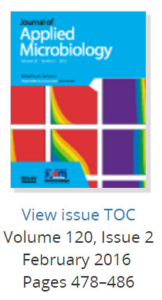Single-use towels offer the most hygienic way to reduce the risk of the transmission of viruses when drying hands in the washroom
New independent research has found that single-use paper towels are the most effective way to dry one’s hands in the washroom and reduce the risk of the transmission of viruses. The study indicates that they help minimise the spread of viruses including ones associated with various diseases, including those causing gastro-intestinal infections such as Norovirus and Rotavirus.
Single-use towels disperse fewer microorganisms into the environment than jet air dryers and warm air dryers and also help reduce the risk that viruses are blown into the faces of small children accompanying adults in the washroom. The findings have serious implications for washroom facility managers in settings such as hospitals and restaurants where hygiene is paramount.
The research outcome
Leading microbiologists, Dr. Patrick Kimmitt and Keith Redway of the University of Westminster, studied the transmission of viruses using three different hand-drying methods: a jet air dryer, a warm air dryer and paper towels. The use of a jet air dryer was found to transmit more virus particles further and at different heights than the other methods, with airborne virus counts also significantly greater. At a range of heights tested, on average the jet air dryer produced over 60 times more viral plaques than a warm air dryer paper and over 1300 times more than paper towels. Combined average results at distances up to 3 metres away from the hand-drying devices showed that a jet air dryer produced over 20 times more viral plaques than a warm air dryer and over 190 times more than paper towels. Air samples collected 15 minutes after use showed that the jet air dryer produced over 50 times more viral plaques than a warm air dryer and over 100 times more than paper towels.
Viruses have been shown to survive on the hands for some time, with Influenza virus lasting from 10-15 minutes, Herpes virus for up to two hours, common cold virus up to one week, and Rotavirus for up to 60 days. Viral pathogens such as Norovirus have a low infectious dose and can be shed in large numbers in faeces.
“Our findings clearly indicate that single-use paper towels spread the lowest number of viruses of all the hand-drying methods we tested,” explained Dr. Patrick Kimmitt . “It is estimated that cross-infection contributes to 40% of cases of healthcare-associated infections and effective hygiene in hand washing and drying is an essential step in minimising such infections.”
Spreading the word
The study was presented briefly by Keith Redway at the European Public Health Conference in Milan in October 2015 where it received wide interest. It was subsequently published in a peer-reviewed scientific journal in December 2015 (reference: Kimmitt, P.T. & Redway, K.F. Evaluation of the potential for virus dispersal during hand drying: a comparison of three methods. Journal of Applied Microbiology. 120, 478-486. http://onlinelibrary.wiley.com/doi/10.1111/jam.13014/abstract).
 Keith Redway has also presented the results in full at ISSA/Interclean, Amsterdam on May 11th at 14:00h in a talk entitled ‘“Washroom hygiene: The dispersal of viruses by different hand-drying methods.”
Keith Redway has also presented the results in full at ISSA/Interclean, Amsterdam on May 11th at 14:00h in a talk entitled ‘“Washroom hygiene: The dispersal of viruses by different hand-drying methods.”
The full study has now open access at: http://onlinelibrary.wiley.com/doi/10.1111/jam.13014/full
“Good hand hygiene can save lives.” explains Keith Redway. “Minimising infection risk by ensuring proper hand hygiene, includes understanding what may compromise that. Our research and results over the years have revealed time and again that single-use towels are the safest way to dry one’s hands in the washroom. This virus study delivers further proof that when it comes to hygiene, drying one’s hands with a single-use paper towel is the safest way to reduce the spread of viruses after a visit to the washroom.”
Previous research undertaken by the Universities of Leeds and Westminster has also found that jet air and warm air hand dryers can spread more bacteria and other microbes in a washroom environment than paper towels.
Watch here the Video relative to the study: https://www.youtube.com/watch?v=nJPxvHPCPUI
This page is also available in: French German Italian Polish Spanish













